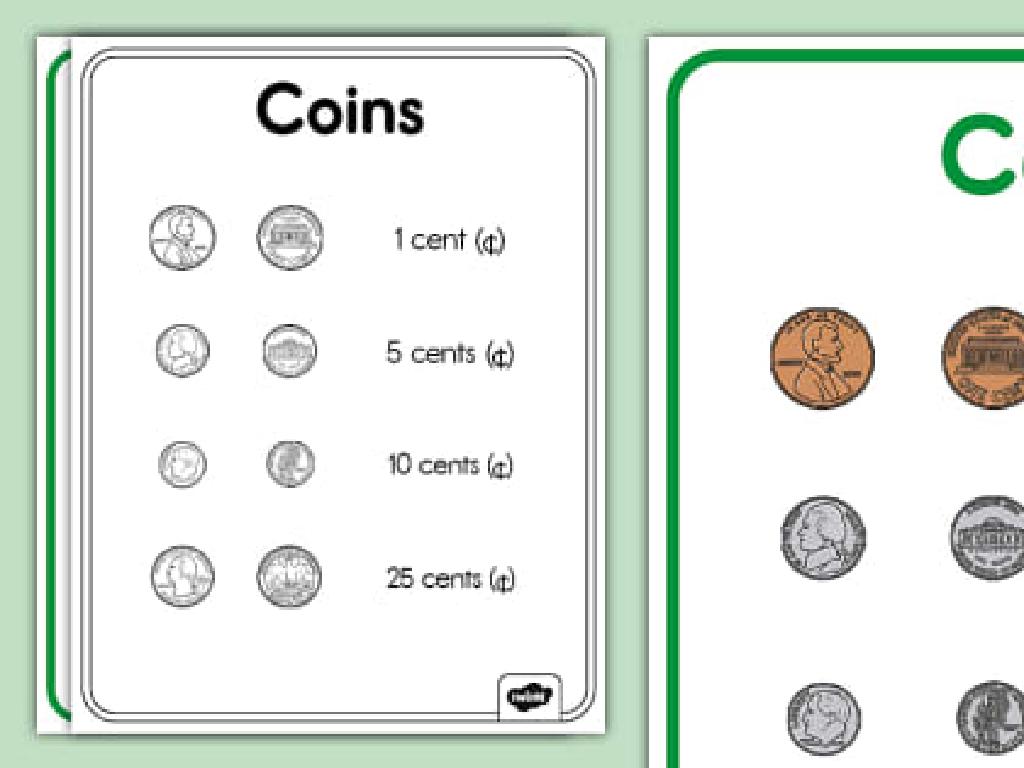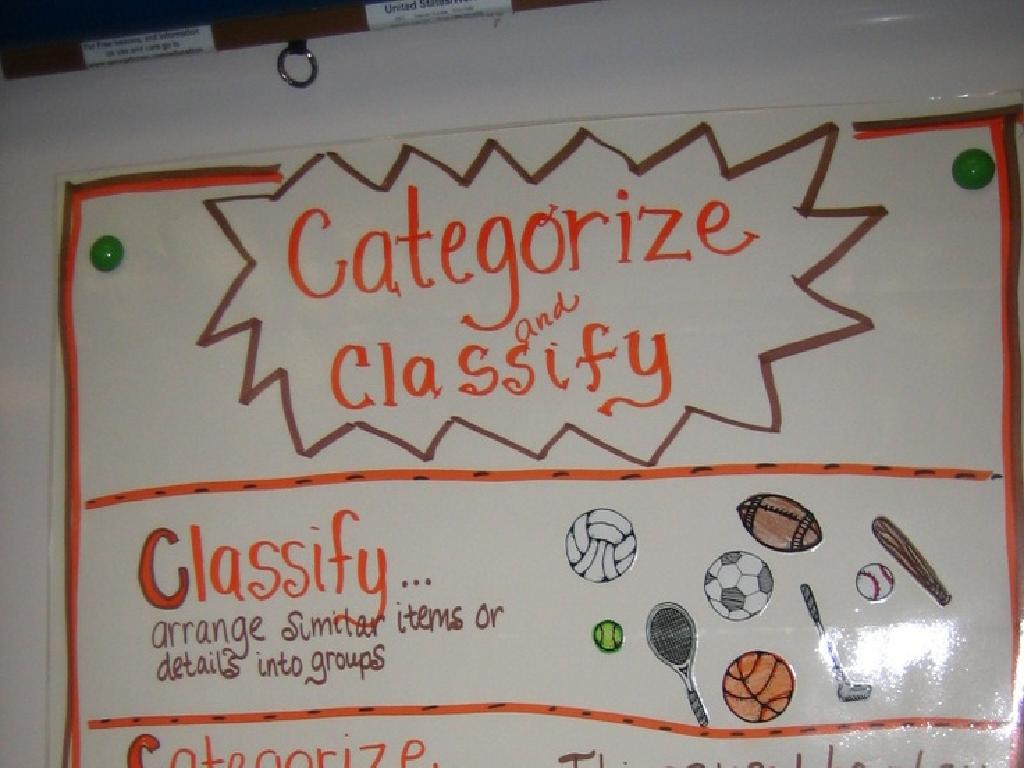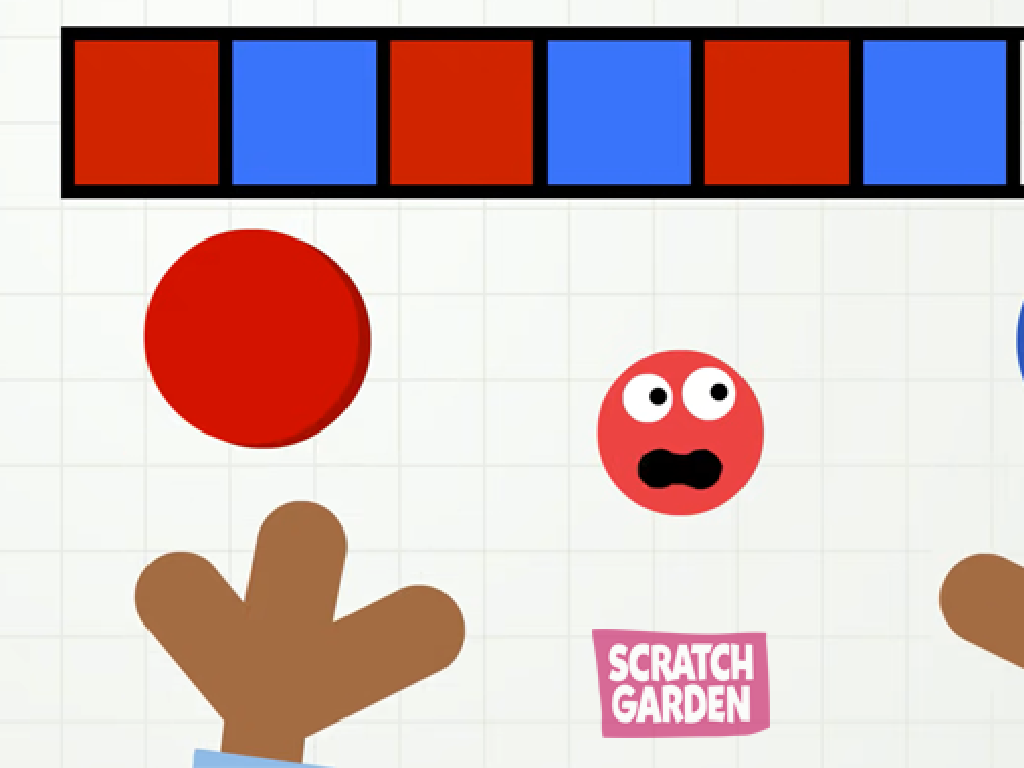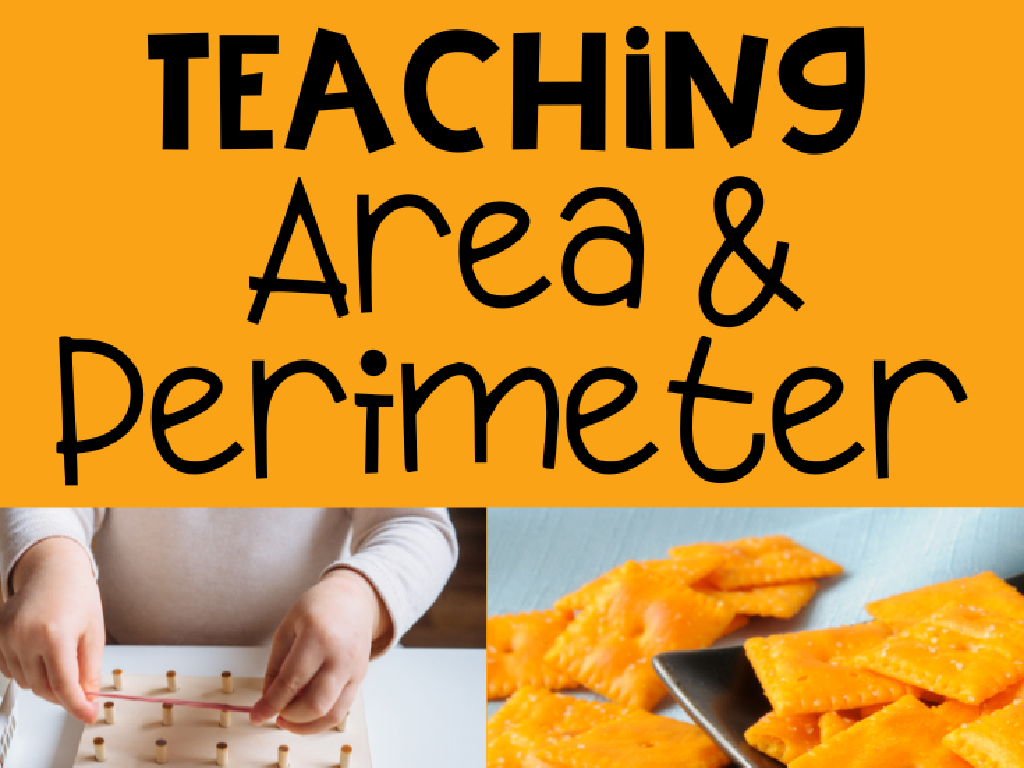Compare Properties Of Materials
Subject: Science
Grade: Third grade
Topic: Materials
Please LOG IN to download the presentation. Access is available to registered users only.
View More Content
Welcome to Materials Science!
– Exploring different materials
– Look at wood, plastic, metal, and more
– Composition of materials
– What substances make up these materials?
– Comparing material properties
– How are glass and rubber different?
– Becoming junior scientists
|
This slide introduces the exciting world of materials science to third graders. Begin by discussing various common materials such as wood, plastic, and metal. Explain that materials are made up of different substances, which give them unique properties. Engage the students by comparing and contrasting the properties of materials like glass and rubber, such as hardness, flexibility, and transparency. Encourage the students to think like junior scientists, observing the world around them and questioning why materials behave the way they do. This will set the foundation for more in-depth exploration of material properties in subsequent lessons.
Exploring Materials Around Us
– What are materials?
– Substances that form all the things we see and use.
– Materials make up everything
– Common material examples
– Examples: Plastic is used for toys, Wood for furniture, Metal in cars, Glass for windows, Fabric for clothes.
– Observing materials in class
– We’ll look at objects in our classroom and talk about what they’re made from.
|
This slide introduces the concept of materials to third-grade students. Begin by explaining that materials are the substances from which all things are made. Emphasize that everything they can touch and see is made from some type of material. Provide relatable examples such as plastic toys, wooden furniture, metal cars, glass windows, and fabric clothing to help them connect the concept to their daily lives. Encourage the students to look around the classroom and identify objects and the materials they are made from. This will help them understand the diversity of materials and their applications in the real world. The activity will also enhance their observational skills and their ability to classify objects based on the materials they are composed of.
Exploring Material Properties
– What are properties?
– Properties are qualities like color or shape.
– Examples of material properties
– Color, texture, hardness, flexibility are some.
– Importance of properties
– They help us choose the right material for a task.
– Class activity: Find properties!
– Look around and list properties of objects you see.
|
This slide introduces the concept of properties as they relate to materials, which are the characteristics that help us identify and classify different materials. Examples include color, texture, hardness, and flexibility. Understanding these properties is crucial for students as it helps them to discern why certain materials are used for specific purposes, such as why rubber is used for tires (flexibility and hardness) or why windows are made of glass (transparency and hardness). For the class activity, encourage students to look around the classroom or their home and make a list of objects and their properties. This will help them apply their understanding of material properties in a practical, hands-on way.
Comparing Properties of Materials
– What does ‘compare’ mean?
– To compare is to find how things are alike or different.
– Properties of materials
– Materials have qualities like hardness, color, and flexibility.
– Comparing a pencil and bottle
– A wooden pencil and a plastic bottle: What’s the same? What’s different?
– Similarities and differences
– We’ll look at what they’re made of, how they’re used, and more.
|
This slide introduces the concept of comparison in the context of material properties. Start by explaining that comparing means identifying similarities and differences. Discuss the various properties by which materials can be compared, such as texture, flexibility, color, and durability. Use the example of a wooden pencil and a plastic water bottle to make the comparison tangible for third graders. Ask them to think about the materials these items are made from, their uses, and how their properties make them suitable for these uses. Encourage the students to participate by thinking of other examples of materials they could compare.
Activity: Material Hunt
– Explore classroom for materials
– List properties of found objects
– Is it hard or soft? Heavy or light?
– Consider material purpose
– Why is a window made of glass?
– Discuss findings with class
|
This activity is designed to engage students in a hands-on learning experience about the properties of materials. Students will search the classroom for objects made of various materials such as metal, plastic, wood, and glass. They should note the properties of each material, such as texture, weight, and flexibility. Encourage them to think critically about why certain materials are used for specific objects, like why windows are made of glass and not wood. After the hunt, facilitate a discussion where students can share their findings and reflections. This will help them understand the practical applications of different materials and their properties in everyday objects.
Why Properties Matter in Materials
– Properties guide material use
– Different uses need different properties like strength, flexibility, or transparency.
– Glass used for windows
– Glass is transparent, letting light through, perfect for windows.
– Think of more material uses
– Can a spoon be made of paper? Why or why not?
|
This slide aims to help students understand the importance of material properties in everyday objects. Properties such as hardness, flexibility, transparency, and durability determine the suitability of a material for a particular use. For instance, glass is chosen for windows due to its transparency, allowing light to pass through. Encourage students to think critically about why certain materials are used for specific objects and to come up with their own examples. This will help them grasp the concept of material properties and their applications in the real world. Discuss the examples students come up with to reinforce their understanding.
Class Activity: Material Match-Up
– Understand material properties
– Match objects to properties
– Use worksheet for the game
– A worksheet with pictures and words
– Draw lines to connect correctly
– For example, a sponge is soft and absorbent
|
This activity is designed to help students learn about the properties of materials in a fun and interactive way. Provide each student with a worksheet that includes images of various objects and a list of material properties such as hard, soft, transparent, opaque, flexible, rigid, absorbent, and waterproof. Students will draw lines to match each object to its correct properties. This will encourage them to think critically about the characteristics of different materials and why certain objects are made from specific materials. For the teacher: Prepare multiple examples of objects and properties to ensure a comprehensive understanding. Consider grouping students and providing a diverse set of materials for them to touch and feel for a more hands-on experience.
Conclusion: Material Properties Mastery
– Congratulations, junior scientists!
– Mastered comparing material properties
– Think about how wood, plastic, and metal differ
– Properties shape our daily objects
– Hardness, flexibility, color affect usage
– Keep observing materials around you!
– What objects at home are made of these materials?
|
This slide wraps up the lesson on material properties by congratulating the students on their achievements. It’s important to reinforce the idea that the properties of materials, such as hardness, flexibility, and color, determine their use in everyday objects. Encourage the students to continue observing and thinking about the materials they interact with daily, considering why certain materials are used for specific items. This will help solidify their understanding and appreciation of material properties in the context of their environment.






